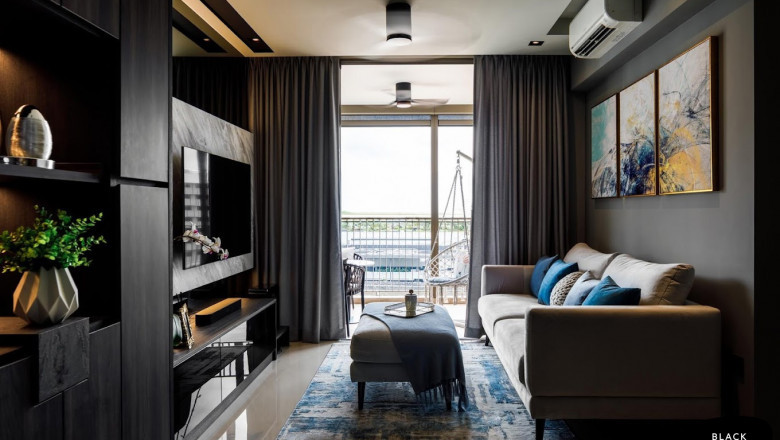views
Mangalore's Design Identity
Unlike metropolitan design centers like Mumbai or Bangalore, Mangalore's interior design scene maintains a closer connection to its regional identity. The city's design aesthetic draws from multiple influences:
- The laid-back coastal lifestyle that values comfort and durability
- Traditional Tulu and Konkani architectural principles
- Portuguese colonial influences visible in historic Mangalorean homes
- The practical considerations of a humid tropical climate with heavy monsoons
These elements combine to create what local designers often call "Karavali Modern" — a design approach that balances contemporary functionality with coastal cultural references.
Client Evolution in the Karavali Region
The client landscape in Mangalore has transformed substantially over the past decade. Previously, interior design services were considered luxury indulgences for the wealthy. Today, a broader segment of Mangalore's population — from young professionals to business owners to returning NRIs — seeks professional design assistance.
"There's growing recognition that thoughtful design isn't just about aesthetics; it's about creating spaces that enhance well-being and functionality," notes Shreya Pai of Designcraft Mangalore. "Our clients increasingly understand that good design is an investment, not an expense."
Local designers report that today's Mangalorean clients are more design-literate than previous generations, often arriving with inspiration boards and specific references. However, they still value designers' expertise in adapting global trends to local conditions and sourcing materials appropriate for the coastal climate.
The Technical Challenges of Coastal Design
Practicing interior design in Mangalore presents unique technical challenges that have spurred creative solutions:
- Humidity management: Designers carefully select materials that resist warping and mold growth in the city's high humidity.
- Monsoon considerations: Entryway designs feature transition zones to manage heavy rainfall, protecting interiors during the intense monsoon season.
- Salt air adaptation: For properties close to the sea, special finishes and corrosion-resistant hardware are essential to counter the effects of salt-laden air.
- Natural cooling: With electricity costs rising, passive cooling design strategies have become increasingly important in Mangalorean interiors.
These environmental factors have pushed local designers to develop specialized expertise not commonly found in design practices from drier regions.
The Business Ecosystem
Mangalore's interior design industry operates within a connected network of allied professionals and craftspeople. Most established design firms maintain relationships with:
- Skilled carpenters, many trained in traditional Mangalorean woodworking
- Metal fabricators specializing in brass and copper work
- Tile artisans who work with both traditional Mangalore tiles and contemporary materials
- Local artists who create customized paintings, sculptures, and textiles reflecting regional themes
This collaborative ecosystem allows designers to deliver highly customized projects with authentic local character, setting them apart from national chain stores that have begun entering the Mangalore market.
Educational Pathways and Professional Development
Until recently, aspiring designers from Mangalore typically left for Bangalore, Mumbai, or international destinations to pursue design education. This has changed with the establishment of design programs at local institutions like Srinivas University and Mangalore Institute of Design. These programs are developing curricula that address both global design principles and the specific needs of coastal Karnataka.
Professional development continues through the Mangalore Interior Designers Collective (MIDC), a local organization that facilitates knowledge sharing, vendor relationships, and collaborative marketing efforts. The MIDC organizes annual design exhibitions that showcase local talent and educate the public about interior design services.
Sustainability Through a Mangalorean Lens
Sustainability in Mangalore's design context takes on regional specificity:
- Adaptation and renovation of traditional Mangalorean houses rather than demolition
- Revival of local craft traditions that might otherwise disappear
- Use of rapidly renewable materials suited to the local climate, such as bamboo and cane
- Design strategies that minimize air conditioning dependency through natural ventilation
"We're redefining what luxury means in Mangalore," explains designer Nitin Kamath. "True luxury here isn't imported marble or European brands; it's thoughtful design that connects you to place, functions perfectly in our climate, and respects our cultural heritage while meeting contemporary needs."
Looking Forward: The Future of Mangalorean Design
As Mangalore continues to develop economically, its interior design sector stands at an exciting juncture. The city's unique position — more affordable than major metros yet increasingly cosmopolitan — creates opportunities for design innovation that balances tradition with modernity.
Several factors will likely shape the future of interior design in Mangalore:
- Growing environmental consciousness among younger clients
- The return of globally experienced Mangaloreans seeking to establish roots in their hometown
- Increasing tourism creating demand for spaces that authentically represent local culture
- Digital connectivity allowing Mangalorean designers to serve clients beyond the city
These trends suggest that Mangalore's interior design community will continue evolving as a distinctive regional voice in India's design conversation — one that offers lessons in cultural continuity, climate responsiveness, and authentic place-making that designers everywhere might learn from.
As one local designer summarized: "We're not trying to be Mumbai or Bangalore. We're creating a Mangalorean design language that speaks to who we are and where we live. That's our strength and our future."














Comments
0 comment